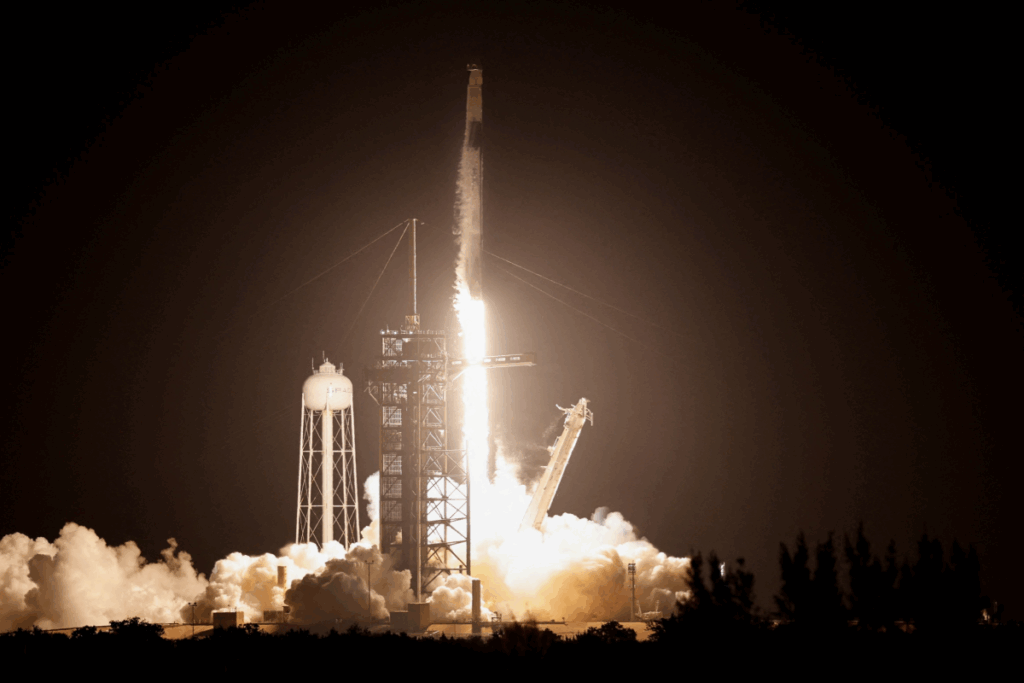Falcon 9 Expands Starlink Network From Florida
SpaceX achieved its 130th Falcon 9 launch of the year as the company continues its unprecedented pace in 2025. The latest mission lifted off from Cape Canaveral Space Force Station in Florida at dawn, carrying 28 Starlink internet satellites into low Earth orbit.
The reusable rocket’s first stage, designated B1095, successfully landed on the droneship Just Read The Instructions in the Atlantic Ocean about eight and a half minutes after liftoff. It marked the third flight and landing for this particular booster, which had previously supported two other Starlink missions.
Meanwhile, the Falcon 9’s upper stage continued its journey to deploy the batch of satellites roughly 64 minutes after takeoff. Once in orbit, these new satellites will join SpaceX’s ever-growing Starlink constellation, designed to provide global high-speed broadband coverage.
Building the Starlink Megaconstellation
With this latest mission, SpaceX’s Starlink network now comprises nearly 8,600 active satellites, making it the largest satellite system ever assembled. More than 70% of the Falcon 9 flights this year have been dedicated to expanding the constellation, which has become a critical element of SpaceX’s business model.
Starlink aims to deliver affordable, low-latency internet to remote and underserved regions around the world. The rapid growth of the constellation reflects both rising demand and SpaceX’s ability to execute frequent launches through its reusable rocket technology.
The current launch was part of the Starlink Group 12-15 series, continuing SpaceX’s steady rollout of satellites in multiple orbital planes to improve global coverage and network stability.
A Near-Record Year for Falcon 9
This 130th liftoff brings SpaceX within two launches of breaking its own single-year record of 132 Falcon 9 missions, set in 2024. The milestone underscores the company’s increasing reliability and dominance in the commercial space sector.
Falcon 9 has become the backbone of SpaceX’s operations, handling both government and private payloads while serving as the primary workhorse for Starlink deployment. The rocket’s reusability — now demonstrated over hundreds of successful landings — remains central to reducing launch costs and increasing cadence.
Each mission further refines the company’s recovery systems, allowing boosters like B1095 to fly multiple times with minimal refurbishment. This model has enabled SpaceX to achieve an unprecedented tempo of launches while maintaining a near-perfect success rate.
Starship Testing Complements Falcon 9’s Success
In addition to its Falcon 9 milestones, SpaceX has conducted five test flights of its next-generation Starship rocket in 2025. The most recent test, earlier this week, was hailed as a “complete success” by the company, marking a significant step forward in its goal of sending humans to the moon and Mars.
Starship is designed to carry larger payloads and eventually replace Falcon 9 as SpaceX’s primary launch vehicle. Until that transition, the Falcon 9 continues to lead the company’s operations, serving as the foundation for both commercial missions and Starlink expansion.
As 2025 enters its final quarter, SpaceX shows no sign of slowing down. With more launches scheduled before year’s end, the company appears poised to set a new record — and further solidify its dominance in the modern space race.


